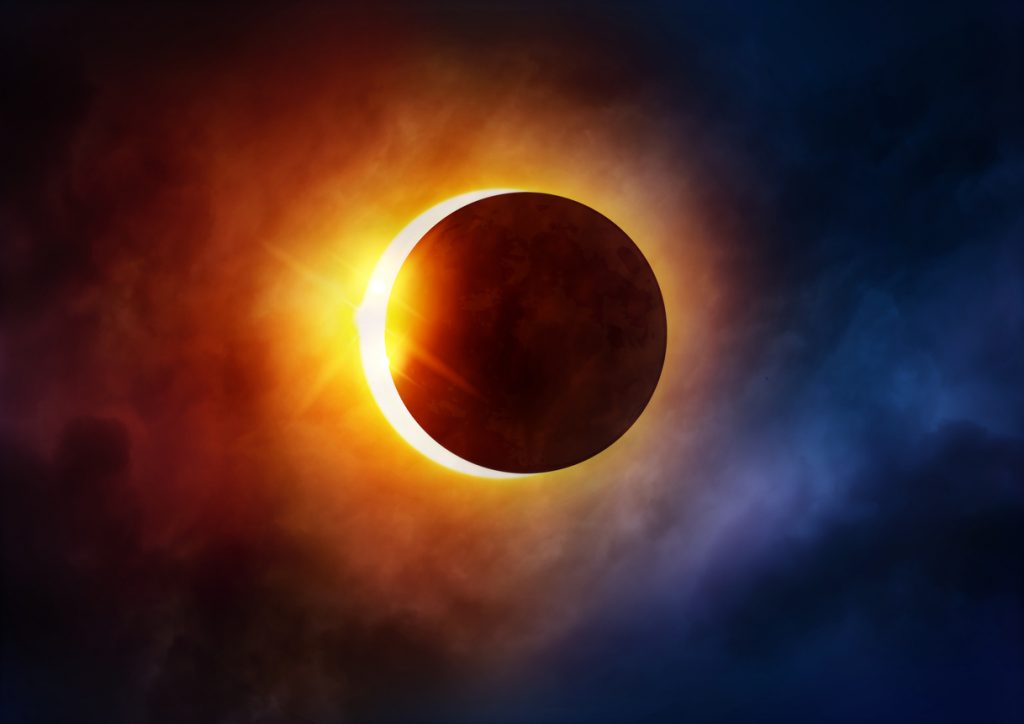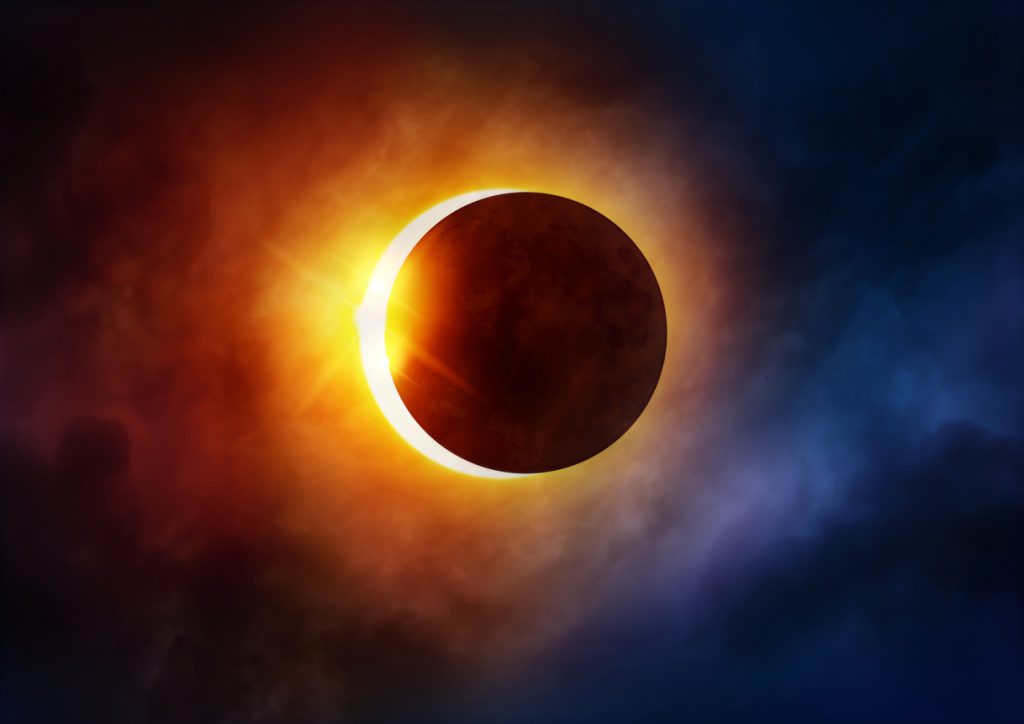A total solar eclipse, already titled the Great American Eclipse, will be visible in the sky on August 21, 2017. Or rather, nothing else will be visible because it’s going to block out the sun.
- There are actually different categories of solar eclipses. For example, a partial solar eclipse happens when a portion of the sun is blocked by the moon, and an annual eclipse is what it’s called when the moon centers itself in front of the sun, leaving the edges visible. The quite rare solar eclipse happens when the moon passes in front of the sun, completely covering it up.
- But really, it’s just a trick of perception for those on Earth. The sun is 864,000 miles in diameter, and the moon is 2,160 miles in diameter—or about 1/400th the size of the sun. But since the moon is 400 times closer to the Earth than the sun, the moon “blocks” the sun when orbital paths cross just so.
- A total eclipse occurs about every 18 months, somewhere on Earth. This one is just big because it’s here, and visible in so much of the country at once.
- This marks the first time in nearly a century—99 years, actually—that a solar eclipse will be at its strongest in the contiguous United States.
- Astronomers say that a 70-mile-wide band that spreads from sea to shining sea will provide the most ideal eclipse conditions. More than seven million “eclipse tourists” are expected to pack into that zone, which stretches from Oregon to South Carolina.
- Grand Teton National Park is in the eclipse band. Management has rented 200 extra portable toilets to meet demand, which it believes will be the busiest day in park history.
- Total length of time that the moon will come between the Earth and the sun, thereby blocking out the sun’s light because of the weird angle: just two minutes.









